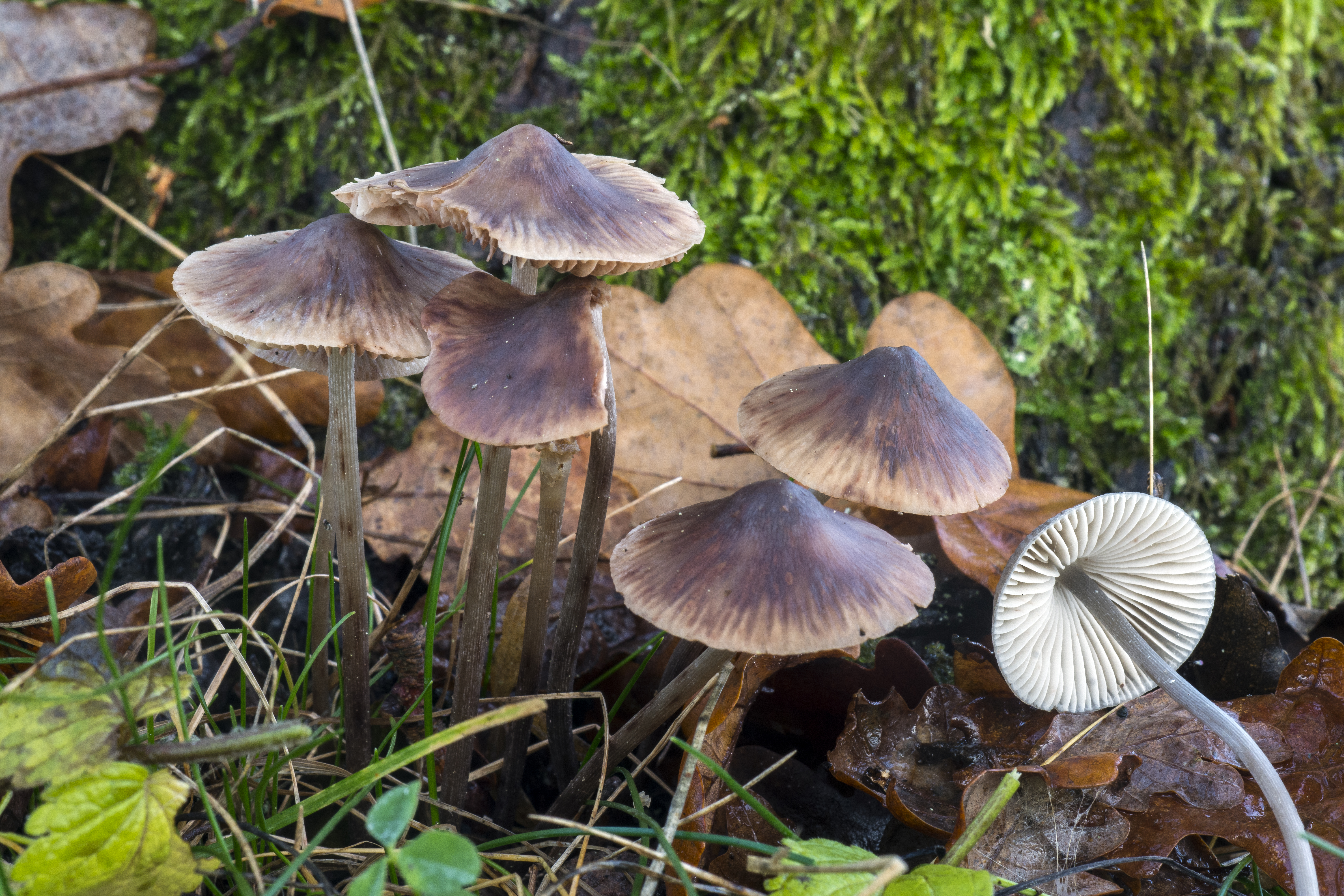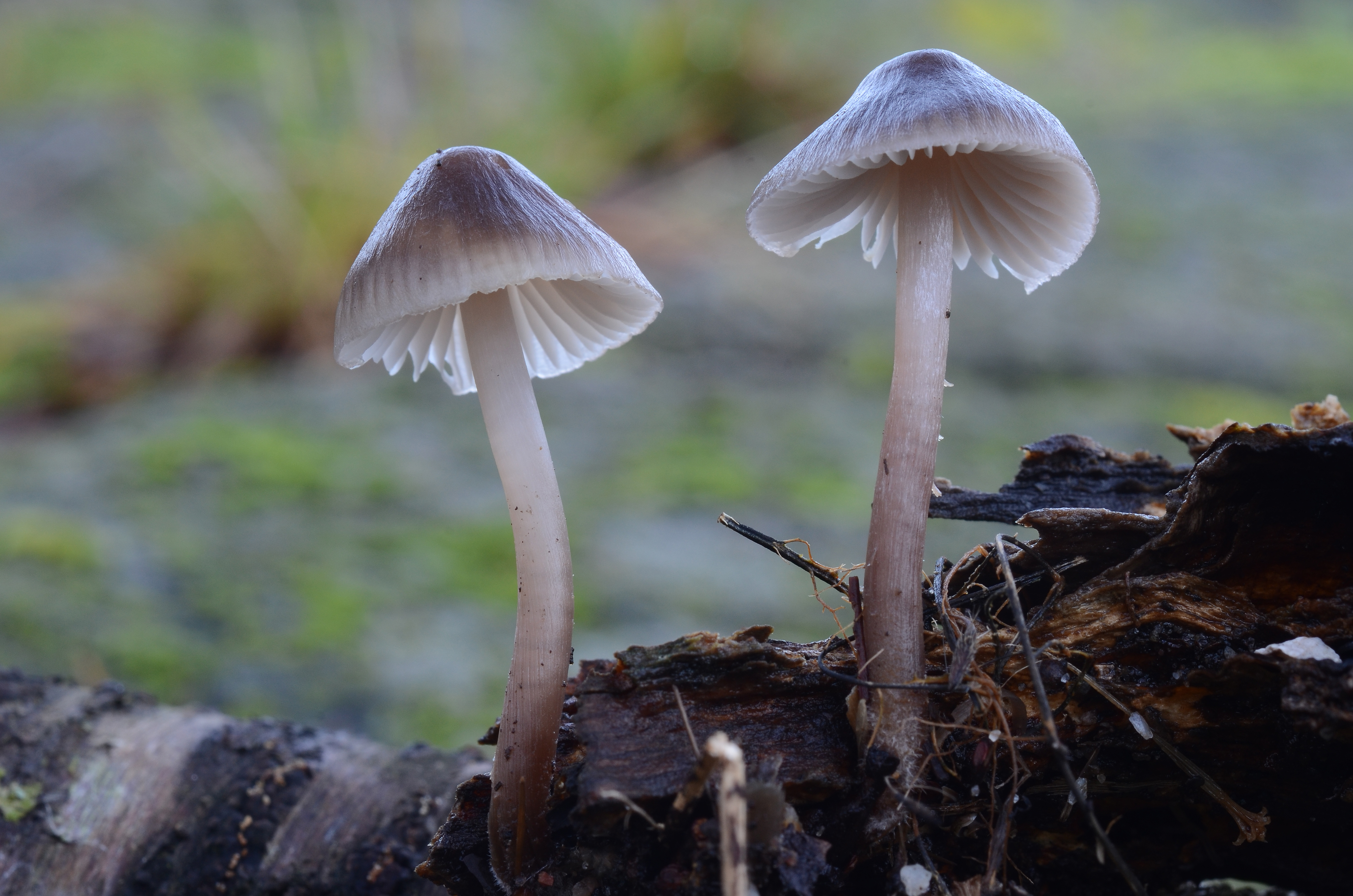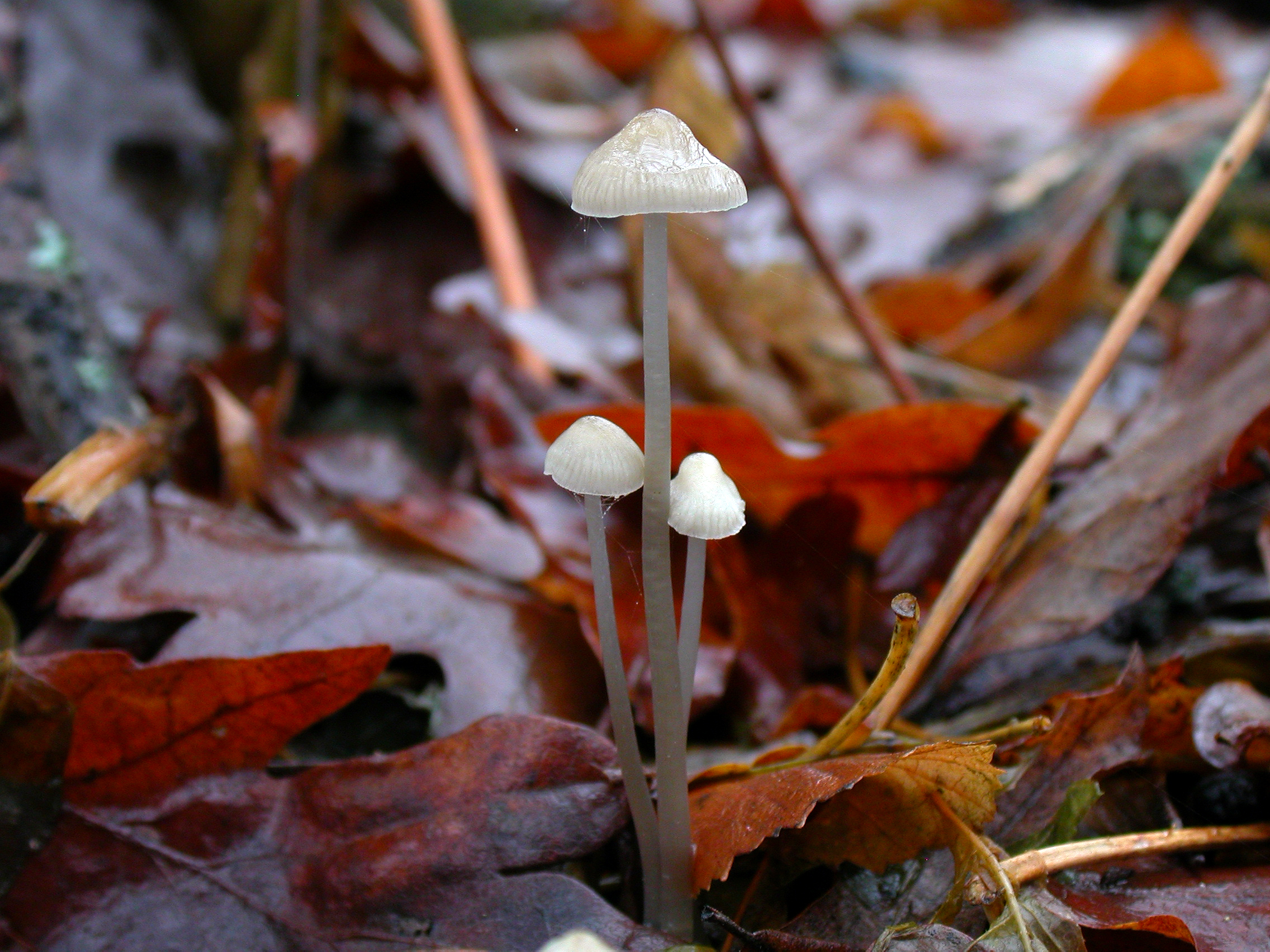Mycena polygramma
Mycena polygramma
Description
1. Cheilocystidia, 2. Hyphae of the pileipellis, 3. Spores, 4. Hyphae of the cortical layer of the stem with caulocystidia.
Cap 20-45 mm across, conical to parabolical or irregularly plano-convex, usually with prominent umbo, sulcate, translucent-striate, pruinose, glabrescent, somewhat lubricous when wet, fairly dark brown, grey-brown to greyish, paler towards the margin. Gills 23-32 reaching the stem, adnexed, dorsally intervenose with age, white to grey, gradually turning more brownish, sometimes flushed with pink, with age often stained with red-brown spots, the edge concolorous. Stem 50- 80(-180) x 1.5-5 mm, cartilaginous, equal for the greater part, somewhat widening towards the base, cylindrical or slightly compressed below, strongly and coarsely grooved to smooth, floccose-puberulous above, floccose-fibrillose farther down, glabrescent, silvery grey to slate grey or brownish grey, occasionally brown-spotted, the base densely covered with long, coarse, flexuous, sometimes woolly, white fibrils, usually rooting. Odour indistinctive. Basidia 27-38 x 8-10 µm, clavate, 4-spored, with sterigmata up to 7.5 µm long. Spores 8-10.5 x 5.5-7.5 µm, Q = 1.2-1.6, Qav = 1.3-1.4, fairly broadly pip-shaped, amyloid. Cheilocystidia 19-55 x 5-11 µm, forming a sterile band, fusiform, lageniform, utriform, subcylindrical or irregularly shaped, smooth or with a few coarse, unevenly spaced excrescences, either apically or laterally. Pleurocystidia absent. Lamellar trama dextrinoid. Hyphae of the pileipellis 2-3.5 µm wide, covered with scattered to crowded, often very much branched excrescences 4.5-18 x 1-2 µm, often embedded in gelatinous matter. Hyphae of the cortical layer of the stem 2- 3.5 µm wide, smooth or covered with a few scattered excrescences, the terminal cells 3.5-9 µm wide, forked or branched or apically coiled, generally with a few very coarse excrescences up to 13.5 x 5.5 µm. Clamps abundant in all tissues.
Ecology and distribution
On moss-covered bark of various deciduous trees. Autumn to winter. Common in southern parts of Norway.



